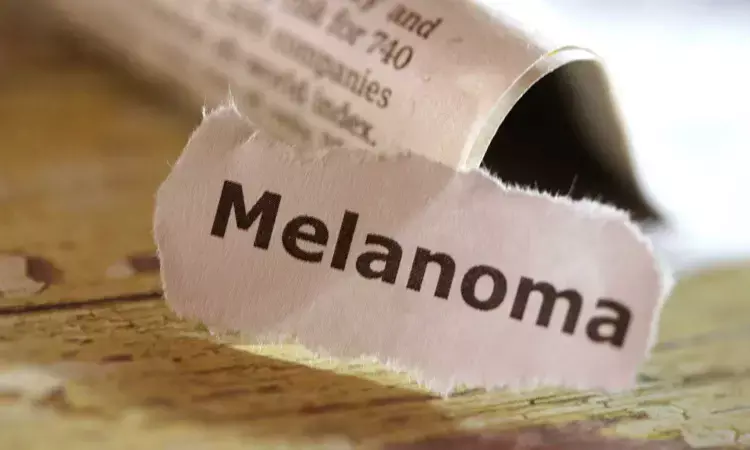- Home
- Medical news & Guidelines
- Anesthesiology
- Cardiology and CTVS
- Critical Care
- Dentistry
- Dermatology
- Diabetes and Endocrinology
- ENT
- Gastroenterology
- Medicine
- Nephrology
- Neurology
- Obstretics-Gynaecology
- Oncology
- Ophthalmology
- Orthopaedics
- Pediatrics-Neonatology
- Psychiatry
- Pulmonology
- Radiology
- Surgery
- Urology
- Laboratory Medicine
- Diet
- Nursing
- Paramedical
- Physiotherapy
- Health news
- Fact Check
- Bone Health Fact Check
- Brain Health Fact Check
- Cancer Related Fact Check
- Child Care Fact Check
- Dental and oral health fact check
- Diabetes and metabolic health fact check
- Diet and Nutrition Fact Check
- Eye and ENT Care Fact Check
- Fitness fact check
- Gut health fact check
- Heart health fact check
- Kidney health fact check
- Medical education fact check
- Men's health fact check
- Respiratory fact check
- Skin and hair care fact check
- Vaccine and Immunization fact check
- Women's health fact check
- AYUSH
- State News
- Andaman and Nicobar Islands
- Andhra Pradesh
- Arunachal Pradesh
- Assam
- Bihar
- Chandigarh
- Chattisgarh
- Dadra and Nagar Haveli
- Daman and Diu
- Delhi
- Goa
- Gujarat
- Haryana
- Himachal Pradesh
- Jammu & Kashmir
- Jharkhand
- Karnataka
- Kerala
- Ladakh
- Lakshadweep
- Madhya Pradesh
- Maharashtra
- Manipur
- Meghalaya
- Mizoram
- Nagaland
- Odisha
- Puducherry
- Punjab
- Rajasthan
- Sikkim
- Tamil Nadu
- Telangana
- Tripura
- Uttar Pradesh
- Uttrakhand
- West Bengal
- Medical Education
- Industry
Family history a Risk Factor for development of melanoma among pediatric population

A recent comprehensive study conducted across 11 academic medical centres aimed to illuminate the distinctive clinical features and potential risk factors associated with pediatric melanoma. The research, which spanned from January 1995 to June 2015, retrospectively analysed cases of melanoma in patients under 20 years old, offering valuable insights into this rare condition that differs significantly from its adult counterpart. This study was published in Journal Of The American Academy Of Dermatology by Elena B. Hawryluk and colleagues.
The study involved 317 patients diagnosed with melanoma, with a noteworthy finding that 73% of cases were identified during adolescence, defined as age 11 and older. The most prevalent subtypes encountered were Spitzoid (31%) and superficial spreading (26%), and surprisingly, 11% of cases originated from congenital nevi, indicating a variety of origins for this condition in young patients.
Of significant clinical relevance was the revelation that sentinel lymph node biopsy, a crucial diagnostic procedure, was performed in 68% of cases, revealing a positive result in 46% of those instances. Moreover, the study noted a fatality rate of 7% among the pediatric melanoma cases, emphasising the severity of this condition even in younger populations.
One striking correlation discovered was the increased likelihood of adolescents with melanoma having a family history of the disease, a statistically significant finding (p=0.046) compared to controls. Additionally, this group was more prone to have received radiation therapy (p<0.03), underlying potential treatment patterns specific to pediatric melanoma.
Despite these groundbreaking revelations, the study also acknowledged certain limitations inherent in its retrospective nature, the size of the cohort, potential referral bias, and control selection. Nonetheless, the findings from this multicenter analysis provide a crucial foundation for better understanding and potentially improving risk stratification for pediatric melanoma.
Dr. Elena B. Hawryluk, a dermatologist at Massachusetts General Hospital and Boston Children’s Hospital, and her colleagues underscored the importance of delving deeper into the risk factors and negative outcomes associated with pediatric melanoma. Their efforts aimed to shed light on the distinct clinical, histological, and lymphatic sampling presentations in pediatric melanoma, given its rarity and divergence from adult forms of the disease.
This research, detailed in a report published recently, opens avenues for further exploration into pediatric melanoma, potentially guiding more tailored approaches to diagnosis, management, and treatment in this unique patient population.
Reference:
Hawryluk, E. B., Moustafa, D., Barry, K. K., Bahrani, E., Reusch, D. B., Brahmbhatt, M., Chen, L., Coughlin, C. C., Gerami, P., Haddock, E., Hook, K., Humphrey, S. R., Kao, P.-C., Kruse, L. L., Lawley, L. P., Mansour, D., Marghoob, A. A., Nguyen, J., Phung, T. L., … Huang, J. Risk factors and outcomes of melanoma in children and adolescents: A retrospective multicenter study. Journal of the American Academy of Dermatology,2023. https://doi.org/10.1016/j.jaad.2023.10.067
Dr Riya Dave has completed dentistry from Gujarat University in 2022. She is a dentist and accomplished medical and scientific writer known for her commitment to bridging the gap between clinical expertise and accessible healthcare information. She has been actively involved in writing blogs related to health and wellness.
Dr Kamal Kant Kohli-MBBS, DTCD- a chest specialist with more than 30 years of practice and a flair for writing clinical articles, Dr Kamal Kant Kohli joined Medical Dialogues as a Chief Editor of Medical News. Besides writing articles, as an editor, he proofreads and verifies all the medical content published on Medical Dialogues including those coming from journals, studies,medical conferences,guidelines etc. Email: drkohli@medicaldialogues.in. Contact no. 011-43720751


